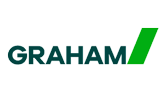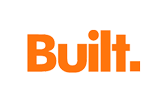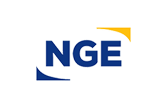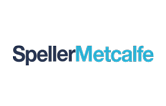COVID-19 & Construction: Getting Aid for Your Business

This information has been verified as accurate at the time of posting. We'll be updating as we learn more, but be aware that things may change rapidly.
A true testament to the danger the COVID-19 pandemic presents to the globe is the way its infection has crept into world economies. 16 million and counting have already applied for some form of unemployment in the US — and it’s not likely to ease up soon. Small- and medium-sized business (SMB) owners and managers must stay vigilant in the search for resources to keep afloat right now.
While the US economy seems to be regaining its strength as markets begin to rebound, many of us in construction are still wondering how we are going to survive this crisis financially. Here's a breakdown of how construction financial managers (CFMs) and business owners can safeguard themselves against a prolonged recovery process and recover losses already incurred.
Current government relief funds and tax programs
The most immediately available programs are those that have affected your taxes — most significantly, the deferment of payroll taxes until the end of 2022. Importantly, 50% must be paid by December 31, 2021. Employers can also delay Railroad Retirement taxes, FICA taxes, and half of the SECA tax.
Another important tax relief program to be aware of is the Employee Retention Credit (EE) which has been issued to encourage consistent payroll. The refundable tax credit is 50% of up to $10,000 in wages paid by an eligible employer whose business has been financially impacted by COVID-19 from business suspensions or lost revenue. Additional tax credits were also launched to help offset the required paid sick and family leave mandated by The Families First Coronavirus Response Act (FFCRA).
Several government loan programs have been initiated to get urgent help to SMBs who are being adversely impacted by COVID-19. Most recently, the Coronavirus Aid, Relief, and Economic Security Act (CARES Act) decreed that the US treasury would immediately implement the Paycheck Protection Program (PPP) which will provide forgivable loans of up to $10,000,000 to cover payroll costs — all forms of wages, benefits, paid leave and more up to $100,000 per employee — in addition to rent, utilities, mortgage, and interest on debt obligations.
In order to qualify, your company must have fewer than 500 employees or meet applicable Small Business Association (SBA) employee-based size standards for your industry. The term length for these loans is two years at 1% interest with six months of payment deferment. The only forgivable portion of the loan includes funds spent during the first eight weeks after the loan's origination and must be requested as it's not automatic.
The Coronavirus Preparedness and Response Supplemental Appropriations Act initially provided support in the form of additional funding for Economic Injury Disaster Loans (EIDLs), also regulated by the SBA and provided by its approved lenders. These loans are low-interest (3.75% APR for SMBs, 2.75% for nonprofits), long-term (up to 30 years), and can be as much as $2,000,000 to cover the majority of operating expenses for businesses impacted by COVID-19. Like the PPP and EE credit, staffing and payroll levels must remain consistent during the loan period.
If you're planning on using any of these services, be aware that they may conflict with each other. You can't, for instance, receive both a PPP loan and an Employee Retention credit. Calculate and compare EIDL + PPP with EIDL + EE retention credit to see which will net you more — then check with your financial services or accounting department to make the decision that’s best for your company.
Private initiatives, charitable organizations, and free or discounted services
The government is not the only one stepping up in this time of need. Several private and charitable organizations are pitching in to lend a hand and many businesses are offering free and discounted services to help SBMs navigate this challenging time.
Accounting firms like BKD are offering COVID-19 tax and accounting resources to navigate aid programs with professionals.
Financial planner Faire has a free financial calculator to help business owners directly project the impact that COVID-19 will have on their business.
Even the Insurance Services Office (ISO), an advisory organization on property insurance risk, is offering endorsements of business interruption insurance being modified to allow for natural disaster claims to be processed without any physical damage to the business — usually only applicable in cases of natural disasters like major weather events.
A call for more help
Join the AGC in calling on the Trump Administration and Congress “to add more funding to and simplify the eligibility requirements for the Small Business Administration (SBA) loan programs so construction firms and their employees can get needed coronavirus relief as soon as possible.”
Demand lawmakers do more to counteract the unique effects COVID-19 is having on construction teams. Investments in infrastructure revitalization in the next proposed stimulus bill, for example, would be a great start to getting the labor force moving again and putting the construction industry in better footing long after we get COVID-19 behind us.

 Matt Schneiderman •
Matt Schneiderman • 














